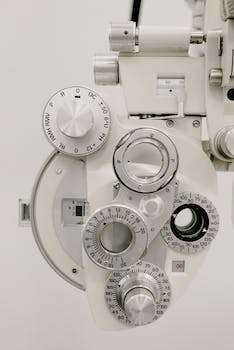

-
Table of Contents
Unveiling the Power of Principal Component Analysis: Unraveling Data Insights
Introduction
Principal Component Analysis (PCA) is a widely used statistical technique that aims to simplify complex data sets by reducing their dimensionality while retaining the most important information. It is a powerful tool for data exploration, visualization, and feature extraction, with applications in various fields such as image processing, genetics, finance, and social sciences. By understanding the principles and applications of PCA, researchers and practitioners can gain valuable insights into their data and make informed decisions based on the extracted components. In this article, we will delve into the fundamental concepts of PCA and explore its practical applications in different domains.
Introduction to Principal Component Analysis (PCA)
Principal Component Analysis (PCA) is a widely used statistical technique that aims to simplify complex data sets by reducing their dimensionality while retaining as much information as possible. In this article, we will provide an introduction to PCA, explaining its principles and discussing its applications.
At its core, PCA is a mathematical procedure that transforms a set of correlated variables into a new set of uncorrelated variables called principal components. These principal components are linear combinations of the original variables and are ordered in such a way that the first component captures the maximum amount of variance in the data, the second component captures the maximum remaining variance, and so on. By doing this, PCA allows us to represent the data in a lower-dimensional space while preserving the most important information.
The main idea behind PCA is to find a new coordinate system in which the data points are spread out as much as possible along the axes. This is achieved by finding the directions, or eigenvectors, along which the data has the maximum variance. These eigenvectors are obtained by performing a matrix decomposition called Singular Value Decomposition (SVD) on the data matrix.
Once the eigenvectors are obtained, the data can be projected onto these new axes, resulting in a new set of variables called the principal components. Each principal component is a linear combination of the original variables, with the coefficients determined by the eigenvectors. The first principal component captures the most variance in the data, the second principal component captures the second most variance, and so on.
PCA has a wide range of applications in various fields. One of its most common uses is in data visualization. By reducing the dimensionality of the data, PCA allows us to plot the data points in a lower-dimensional space, making it easier to visualize and interpret the data. This is particularly useful when dealing with high-dimensional data sets, where it is difficult to visualize the data directly.
Another important application of PCA is in feature extraction. In many machine learning and pattern recognition tasks, the number of features or variables is often much larger than the number of samples. This can lead to overfitting and poor generalization performance. PCA can be used to reduce the dimensionality of the feature space, selecting only the most informative features and discarding the redundant ones. This not only improves the performance of the learning algorithms but also reduces the computational complexity.
PCA is also widely used in image processing and computer vision. In these fields, images are often represented as high-dimensional vectors, where each element corresponds to a pixel value. PCA can be used to extract the most important features from these images, allowing for tasks such as image compression, denoising, and recognition.
In conclusion, Principal Component Analysis is a powerful technique for dimensionality reduction and data visualization. By finding the directions of maximum variance in the data, PCA allows us to represent the data in a lower-dimensional space while preserving the most important information. Its applications range from data visualization and feature extraction to image processing and computer vision. Understanding the principles and applications of PCA is essential for anyone working with complex data sets and seeking to gain insights from them.
Mathematical Principles behind Principal Component Analysis

Principal Component Analysis (PCA) is a widely used statistical technique that aims to simplify complex data sets by reducing their dimensionality while retaining as much information as possible. This article will delve into the mathematical principles behind PCA and explore its various applications.
At its core, PCA is a linear transformation technique that seeks to find a new set of variables, called principal components, which are linear combinations of the original variables. These principal components are chosen in such a way that they capture the maximum amount of variation present in the data. By doing so, PCA allows us to represent the data in a lower-dimensional space, making it easier to analyze and visualize.
To understand the mathematical principles behind PCA, we need to start with the concept of covariance. Covariance measures the relationship between two variables and indicates how they vary together. In PCA, the goal is to find a set of orthogonal axes along which the data exhibits the maximum covariance. These axes are known as eigenvectors, and the corresponding eigenvalues represent the amount of variance explained by each eigenvector.
The first step in PCA is to standardize the data by subtracting the mean and dividing by the standard deviation of each variable. This ensures that all variables are on the same scale and have equal importance in the analysis. Next, the covariance matrix is computed, which contains the covariances between all pairs of variables. The eigenvectors and eigenvalues of this covariance matrix are then calculated.
The eigenvectors are sorted in descending order based on their corresponding eigenvalues. The eigenvector with the highest eigenvalue represents the direction of maximum variance in the data and is therefore chosen as the first principal component. The second principal component is selected as the eigenvector with the second highest eigenvalue, subject to the constraint that it is orthogonal to the first principal component. This process is repeated until all desired principal components are obtained.
Once the principal components are determined, the original data can be projected onto these components to obtain the transformed data set. Each observation in the transformed data set is a linear combination of the original variables, weighted by the corresponding loadings (coefficients) of the principal components. The transformed data set retains most of the information present in the original data, but in a lower-dimensional space.
PCA has numerous applications across various fields. In finance, it is used for portfolio optimization and risk management, where it helps identify the most important factors driving asset returns. In image processing, PCA is employed for facial recognition and image compression, where it reduces the dimensionality of images while preserving their essential features. In genetics, PCA aids in identifying population structure and understanding genetic variation.
In conclusion, understanding the mathematical principles behind PCA is crucial for grasping its applications in various domains. By finding the principal components that capture the maximum variance in the data, PCA simplifies complex data sets and facilitates analysis and visualization. Whether in finance, image processing, or genetics, PCA proves to be a powerful tool for extracting meaningful information from high-dimensional data.
Applications of Principal Component Analysis in Data Analysis
Applications of Principal Component Analysis in Data Analysis
Principal Component Analysis (PCA) is a widely used statistical technique that has found numerous applications in data analysis. By reducing the dimensionality of a dataset, PCA allows for a more efficient representation of the data, making it easier to interpret and analyze. In this section, we will explore some of the key applications of PCA in data analysis.
One of the primary applications of PCA is in exploratory data analysis. When dealing with high-dimensional datasets, it can be challenging to visualize and understand the underlying structure of the data. PCA helps address this issue by transforming the original variables into a new set of uncorrelated variables called principal components. These components capture the maximum amount of variance in the data, allowing for a simplified representation of the dataset.
Another important application of PCA is in feature extraction. In many real-world scenarios, datasets contain a large number of variables, some of which may be redundant or irrelevant for the analysis. PCA can be used to identify the most informative variables by ranking them based on their contribution to the principal components. By selecting only the top-ranked variables, researchers can reduce the dimensionality of the dataset while retaining the most relevant information.
PCA is also widely used in image processing and computer vision applications. Images are typically represented as high-dimensional arrays, making it challenging to analyze and compare them. PCA can be applied to images by treating each pixel as a variable, allowing for the extraction of the most important features. This enables tasks such as image compression, where the high-dimensional image can be represented using a smaller number of principal components without significant loss of information.
In the field of genetics, PCA has proven to be a valuable tool for analyzing large-scale genomic data. Genomic datasets often contain thousands of variables, representing genetic markers or gene expression levels. PCA can be used to identify patterns and relationships among these variables, helping researchers understand the genetic basis of diseases or traits. By visualizing the principal components, researchers can identify clusters or subgroups within the data, which may correspond to different genetic profiles.
PCA is also commonly used in finance and economics. In portfolio management, for example, PCA can be used to identify the most important factors driving the returns of a set of assets. By analyzing the principal components, investors can gain insights into the underlying risk and return characteristics of their portfolios. PCA is also used in macroeconomic analysis, where it can help identify the main drivers of economic growth or inflation by analyzing a large number of economic indicators.
In conclusion, Principal Component Analysis (PCA) is a versatile technique that has found numerous applications in data analysis. From exploratory data analysis to feature extraction, image processing to genetics, and finance to economics, PCA has proven to be a valuable tool for simplifying and interpreting complex datasets. By reducing the dimensionality of the data and capturing the most important information, PCA enables researchers and analysts to gain valuable insights and make informed decisions.
Q&A
1. What is Principal Component Analysis (PCA)?
PCA is a statistical technique used to reduce the dimensionality of a dataset while retaining most of its important information.
2. What are the principles behind Principal Component Analysis?
PCA aims to find a new set of variables, called principal components, that are linear combinations of the original variables. These components are chosen in a way that they capture the maximum amount of variance in the data.
3. What are the applications of Principal Component Analysis?
PCA is widely used in various fields, including image and signal processing, data compression, feature extraction, and exploratory data analysis. It helps in identifying patterns, reducing noise, and visualizing high-dimensional data.
Conclusion
In conclusion, Principal Component Analysis (PCA) is a widely used statistical technique for dimensionality reduction and data visualization. It helps in identifying the most important features or components in a dataset and provides a lower-dimensional representation of the data. PCA has various applications in fields such as image processing, genetics, finance, and social sciences. By understanding the principles and applications of PCA, researchers and practitioners can effectively analyze and interpret complex datasets, leading to improved decision-making and insights.











